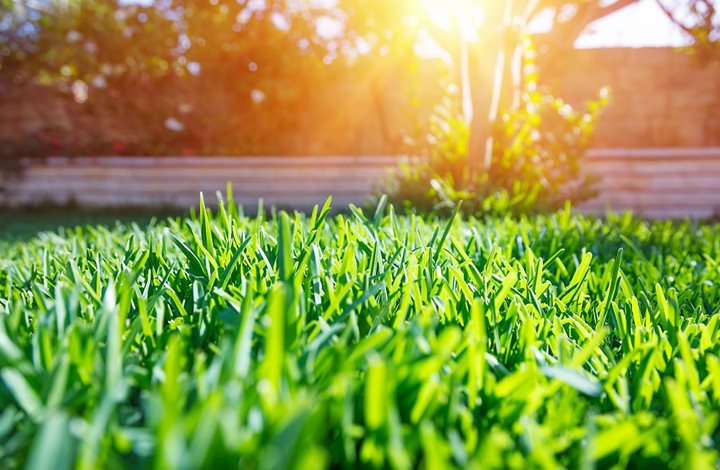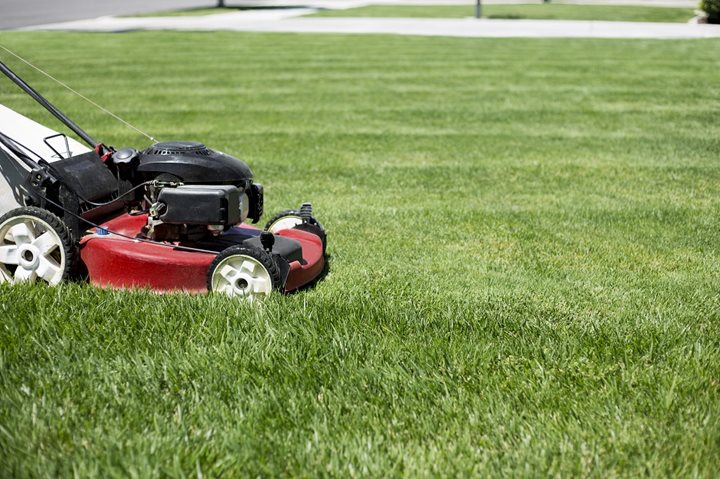Curb appeal derives from more than a beautiful home. A beautiful setting for your home includes your landscaping and lawn, which create the perfect frame for your house.
Your new home came with a freshly sodded yard and landscape plantings. Will they survive? They will if you learn and follow a few basic things to be sure your sod and landscape plants get established and thrive.

'Shumskiy, Anderi / Shutterstock.com'
Even grass is thirsty
Your builder may have set your sod down and started it on its way before you moved in. However, it is up to you to care for your sod to help it grow healthy and strong.
Gregg and Sherry Tucker of All Seasons Mulch Market and Landscape Supplies offer their top three tips to help you care for your newly sodded lawn:
- Apply Insecticide and Fungicide throughout the year (per package instructions)
- Apply a pre-emergent in the Spring and Fall
- Control Water Cycle – do not overwater.
Whether it’s winter, spring, summer or fall, newly planted lawns are thirsty. Sod needs water to support the growth of healthy roots. According to Clemson’s extension service, “Water newly transplanted sod immediately to wet the soil below to a 3-inch depth to enhance rooting. Do not let the soil dry out until a good union between the sod and soil surface has been achieved. Light, frequent applications of soil topdressing will help to smooth out the lawn surface.”
Do not cut your lawn until the sod has established a good root system. Clemson advises, “Do not mow until the turf grass sod is firmly rooted and securely in place. The mowing height and frequency on newly sodded areas should be the same as normally practiced on established turfs.”
While you may think, your new lawn will require fertilization soon after your move-in, the sod has been grown in a good sod-farm and does not require it. Clemson says, “Start a fertility program after the sod has established a good root system.”

'Om, Anna / Shutterstock.com'
Caring for trees in your yard
If your builder has planted new trees on your lot, you will need to care diligently for them. Trees are prone to transplant shock. Because most of a tree's roots are lateral, stretching out under the top layers of soil, a tree may lose most of its root structure when transplanted. Without enough roots, a tree may not be able to take up enough water to replace the water it loses through its leaves and branches. Clemson horticulture recommends, “One inch of water each week for the first season is a good rule of thumb, but monitoring soil moisture and applying water as needed is preferable. Remember, overwatering can reduce soil air space, lowering oxygen availability, and that can be just as stressful as drought.”
Use mulch around the base of a tree to prevent water evaporation. Be mindful of the tree’s trunk flare and do not cover it with mulch. The tree flare is the area of the trunk that is wider just above the soil. Horticulturists at Clemson tell us, “Mulching a large area around newly planted trees with 3 to 4 inches of wood chips or bark also conserves soil moisture and moderates soil temperatures. Mulch also inhibits the growth of grass.”

'Brocreative / Shutterstock.com'
Lowcountry landscape plants
Builders in the Charleston area plant shrubs and flowering plants around your home. Their selections are tolerant of our climate, but they do need regular care until they are established.
If you want to enhance your landscape, the Tuckers suggests three plantings which will help your yard look great, and distinctive from everyone else’s yard. They are:
- Knock Out Roses
- Loropetalum – try the semi dwarf variety, Purple Diamond
- For Shade – Variegated Flax Lily (Dianella Tasmanica “Varigata”) is a beautiful lily that stays beautiful year round as long as it gets protection from trees.
Be sure that the shrubs planted are the correct one’s for your home’s scale and size. Remember, not all plants remain small!
Learn how to prune your new plants. Hedge clippers are not the tool of choice for pruning shrubs or blooming plants. Consult Clemson’s post about how to correctly prune your shrubs.
Commonly used landscape plants in the Lowcountry are Japanese Privet (Ligustrum japonicum) and Azaleas which bloom in the spring. Clemson has a good list of shrubs with photos of them if you don’t know what you have in your yard and need a good resource to look up plants.
If you have blooming shrubs such as Azaleas, do not prune them in the spring because if you do, you’ll cut off the flowers. Never prune azaleas into small balls or hedges.
Shrub crape myrtles are a favorite especially due to their tolerance of our hot, humid summers. Native to China and Japan, these lovely flowering trees and shrubs are synonymous with The South. They bloom in the heat of the summer and provide color and interest in your plantings. Follow the advice for their care from Southern Living. Never, never commit crape murder -- which is to cut them off at the top.
Whether you’ve ever gardened or not, following a few simple tips will help you keep your lawn and plantings in tip-top shape and have your neighbors green with envy.
###
Thank you for reading and sharing our articles from The Greater Charleston New Homes Guide. Our business is to know Charleston, SC's new home construction, home builders, neighborhoods, and homes so we may assist you as you take your new construction home journey. Please take the time to explore our library of helpful tips, guides and insights. The Greater Charleston New Homes Guide is considered the most comprehensive and reliable resource to new home construction, builders, neighborhoods, and homes throughout the Lowcountry.
1.17
Tagged as: Home Maintenance
Categories: The Guide Tools